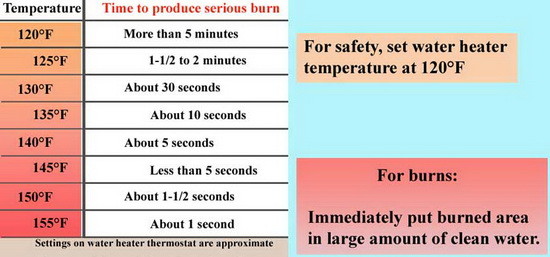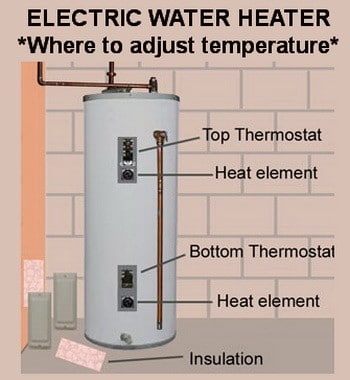Choosing an optimal water heater temperature can improve comfort, lower energy costs, and reduce the chance of scalding. This guide explains why 120°F (49°C) is commonly recommended, how to adjust gas and electric water heaters, and what to do if problems persist.
Recommended Water Heater Temperature
Most experts suggest setting a water heater to around 120°F (49°C). This temperature can help save on utilities while lowering burn risks. Temperatures below 120°F may encourage certain bacteria, and temperatures above 130°F raise the chance of scalding. For homes with appliances that need hotter water, consult the manufacturer’s instructions before making adjustments.
Why Temperature Matters
Safety is a major concern because very hot water can cause burns. Lower settings can also reduce monthly bills and maintain an overall comfortable supply of hot water. Properly adjusting the temperature can help meet household needs without causing unnecessary wear on the heater.
Checking Your Current Water Temperature
Turn on the hot tap and let it run for about a minute. Catch some water in a cup or bowl and use a cooking thermometer to measure it. If the reading is significantly above or below 120°F, a temperature change can be beneficial.
Adjusting a Gas Water Heater
Locate the temperature dial near the burner at the bottom of the tank. Some models have settings labeled “Warm,” “Hot,” or actual temperature markings. Turn the dial a small amount toward the desired setting and wait a few hours before checking the temperature again. If your heater has a pilot light, you may need to relight it. Refer to the heater’s instructions for any specific relighting guidelines.
Adjusting an Electric Water Heater
Begin by switching off the circuit breaker that powers the heater. Remove the metal panels on the tank’s side to access the thermostats. Electric heaters may have one or two thermostats, usually behind pieces of insulation. Adjust the small thermostat dial with a screwdriver, then replace the insulation and panels. Turn the power back on and wait a few hours to test the water temperature again.
Troubleshooting Tips
If water temperature fluctuates or if the tank makes rumbling sounds, there may be a buildup of sediment. Flushing some water out of the tank can help clear deposits. If hot water runs out too quickly, a heating element may need replacement in electric units. Gas units might need a closer look at the burner or thermocouple if the pilot light keeps going out.
Regular Maintenance
Draining a few gallons from your heater every six or twelve months can reduce sediment buildup. Checking the anode rod once a year can also extend the life of the tank. The pressure relief valve should be tested occasionally by gently lifting and lowering its handle to ensure it moves freely.
Safety Considerations
Always turn off gas or electricity before removing panels or reaching inside the heater. Wear gloves and take care around hot metal surfaces and steam. If you suspect a serious issue such as a gas leak, consult a licensed professional immediately.
Setting your water heater to about 120°F helps keep energy use under control while lowering the danger of scalding. Gas heaters usually have a control dial near the bottom, while electric models use thermostats located behind access panels. A few adjustments, combined with periodic maintenance, can keep your water heater in good shape for years to come. If concerns persist after basic checks and changes, consider seeking guidance from a qualified plumber or electrician.





What temperature setting is the best to set a water heater when there is a bathroom in the back of the house?